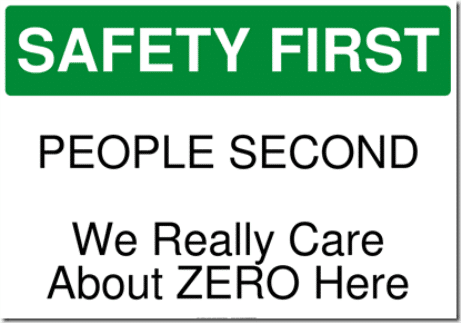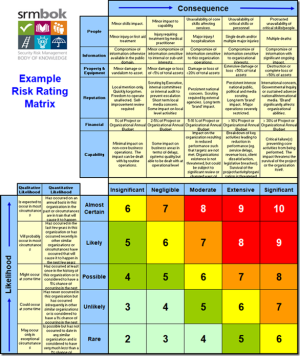Zero Accident Vision Non-Sense

Assertion is not evidence despite that fact that one claims that one is doing ‘science’. From the very first line in this article we have the nonsense language of ‘all accidents are preventable’. How on the real earth can such language make sense. Humans are fallible, systems are fallible, organisations are fallible and the world is random but lets keep telling people fairy tales. All accidents are not preventable, and to speak such nonsense simply creates skepticism and cynicism for safety. So, when an accident happens in organizations that speak like this what is the trajectory? Of course, blame. Zero is not just a goal, it is cultural language and ideology. Keep speaking perfection to fallible people and see what happens.
Real professions don’t speak perfection to fallible people. Just imagine if teachers expected no mistakes from your children. Just imagine if doctors and nurses expected perfection in health? Just imagine lawyers insisting humans make no mistakes, they would be out of business. But no, Safety insists on no mistakes and in doing so wants to eradicate all learning from human ‘being’. A little read of Hallinan Mistakes We Make might cure one of such nonsense assertions.
So, here is the real nonsense of the article:
‘… companies with ZAV programs reported high levels of commitment, safety communication, safety culture, and safety learning.’
Hmmm, and what about companies that don’t speak the nonsense of zero? Are they less committed to safety and tackling risk?
Of course there is no evidence to support any of the assertions in the article especially any suggestion that commitment is better in ZAV companies. Indeed, most people I know who have been sacked from ZAV companies tell me consistently of brutal cultures, unforgiving regimes of absolutes and intolerance. One could easily find non ZAV organisations that report: ‘high levels of commitment, safety communication, safety culture, and safety learning.’
Of course, the article reframes what zero actually means and we find out that zero doesn’t mean zero. Only in safety could one find such nonsense language about redefining words to suit oneself. According to the article Zero now doesn’t infer a number but rather ‘an ambition to make work safe’. Strange, I don’t need zero to help me do that indeed, I can do that better by simply caring for people. Unfortunately the ideology and language of zero has only one trajectory and it can’t be care for humans. When one speaks the language and semiotics of an absolute number to fallible people it can only tell people that the love of safety is the love of numbers. And of course, this whole article is about injury rates. More delusion, apparently injury rates are a measure of safety, thanks Mr Heinrich.
Of course, there is no discussion or evidence or measures in the article about how commitment is defined of what commitment means. Why not? This is a religious article and like the Safety Congress you just need to believe (https://safetyrisk.net/no-evidence-for-the-religion-of-zero/), you don’t need evidence.
Finally the article speaks about communication when the whole purpose of zero is not to communicate. There is nothing about the ideology of zero that humanizes people, nothing about zero discourse that acknowledges what it is to be human indeed, it is a flight from humanity in the crusade about objects. Zero is afraid of humans, so why on earth would one want to communicate to them (https://safetyrisk.net/no-evidence-for-the-religion-of-zero/).
I’d much rather read about how people care for each other in safety than this nonsense about a number as a goal and the dehumanizing language that does with it. I’d much rather be encouraged by how people accept the fallibility of humans and tackle risk (https://safetyrisk.net/fear-of-being-in-the-world/). I’d much rather read about the realities of tackling risk and learning than this love of ZAV bells and whistles and safety propaganda (https://safetyrisk.net/bells-and-whistles-and-due-diligence/).



Rob Long says
Don, nothing much more sad than behaviourism. Humans are not machines.
Don says
I am not very good articulating, especially under pressure. Your article outlines my thoughts as I become engaged in my second Behavioral Based Safety program implementation. It is quite sad.